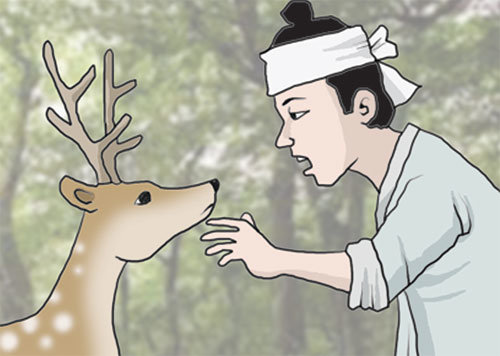The woodcutter and deer are culture
The woodcutter and deer are culture
Posted April. 03, 2019 07:28,
Updated April. 03, 2019 07:28

Fairytales seem to consist the innocent and pure childhood but it skillfully conceals violence as well. This is so with Korean traditional fairytale such as “The Woodcutter and the Fairy,” not to mention that of the Grimm brothers and Anderson. The story of the Woodcutter and the Fairy goes as follows: The poor woodcutter saves a deer that was being chased by hiding it behind a pile of wood. In return for saving its life, the deer grant’s the woodcutter’s wish. The woodcutter does what the deer tells him to do and hides the fairy’s celestial robe and makes her his wife. Regardless of what happens afterwards, this is a happy story in the perspective of the woodcutter as his dream comes true. It is, however, a violent story in the view of the fairy as she has no choice but to be married to the woodcutter. The reason why we do not recognize this story as violence is because our culture unconsciously oppresses us from reading the story in the eyes of the fairy.
The title also plays a role in such oppression by having the woodcutter appear first. Everything is justified with the woodcutter in the center. What would happen if the title is changed to “The Fairy and the Woodcutter”? Then, the subject of the story is shifted towards the fairy and the act of the woodcutter, who peeps into the fairy taking a bath, stealing her celestial robe and gettering married by deception, is Peeping Tomism and violence. The deer that discloses the secrete to hold back the fairy also goes along with such violence. No, the deer is not just a simple co-conspirer, but the subject that prescribes and provokes violence or at least the representative of patriarchal culture.
To read this fairytale in such perspective, however, the title as well as the contents must change. As it can be seen by comparing some 20 types of the Woodcutter and the Fairy and the Fairy and the Woodcutter published in Korea, leaving the contents untouched and simply changing the order of the words in the title is hoping for the world to change with just a slogan. A slogan is nothing more than a slogan. Real change is only possible when the culture based on the Woodcutter and the Fairy and the Fairy and the Woodcutter moves towards the right direction, albeit slow. This is the reason why it is necessary to examine and contemplate the violence in culture.
yes@donga.com







